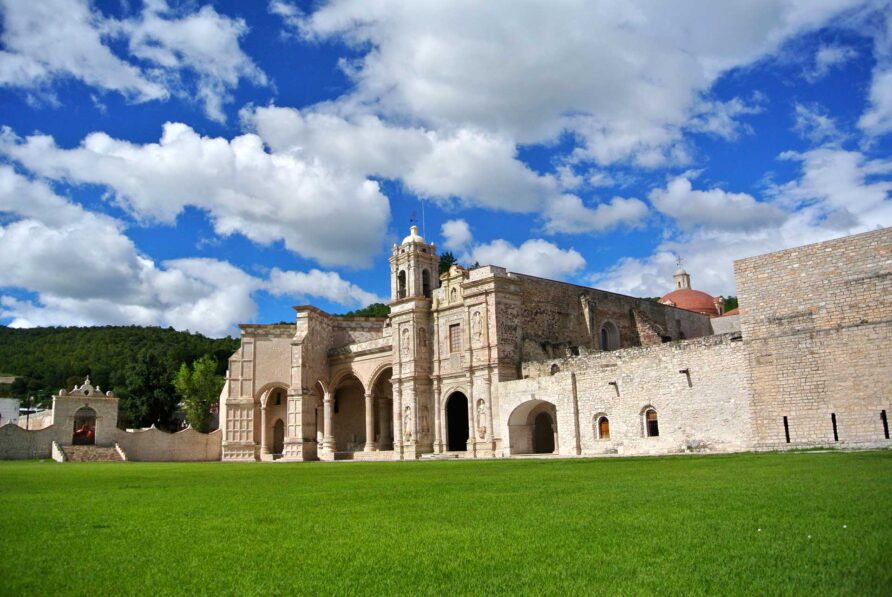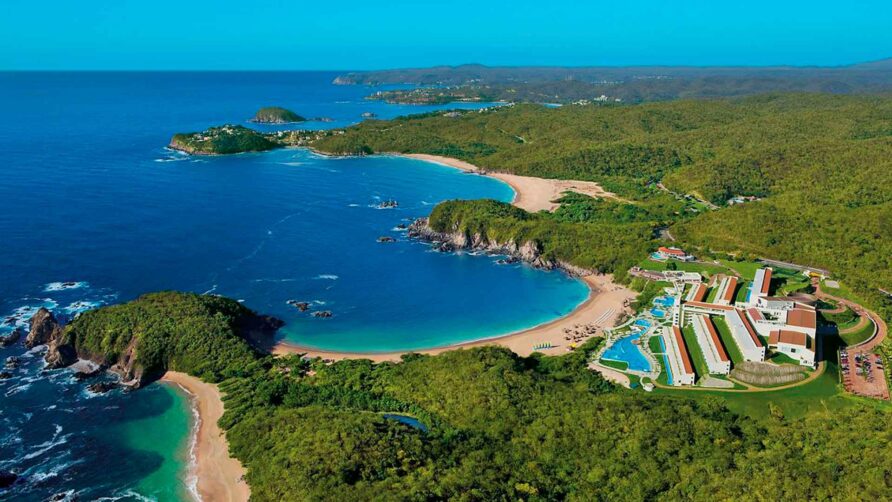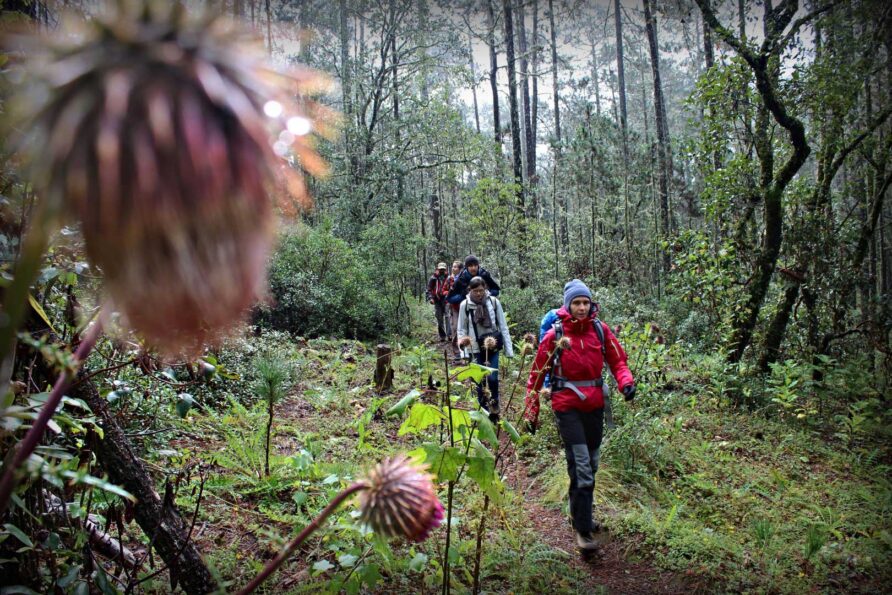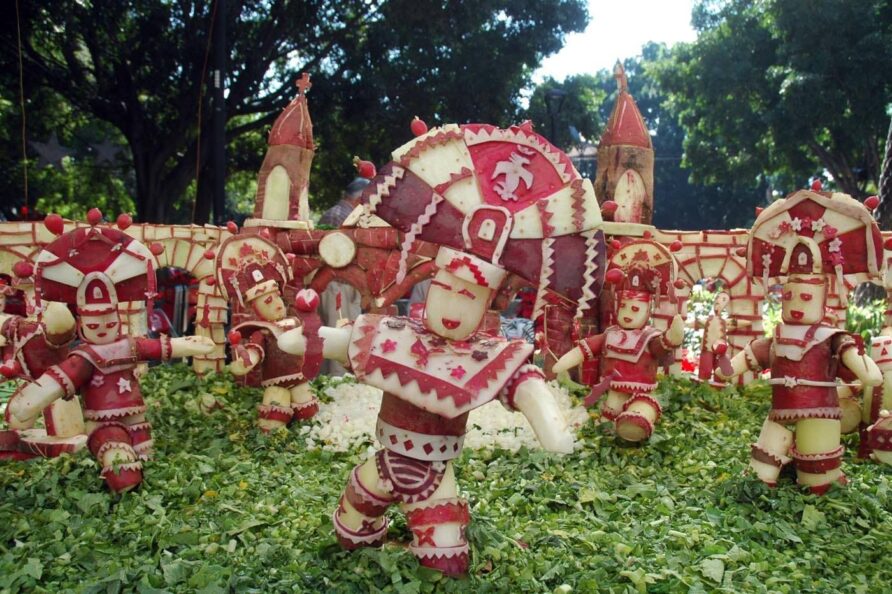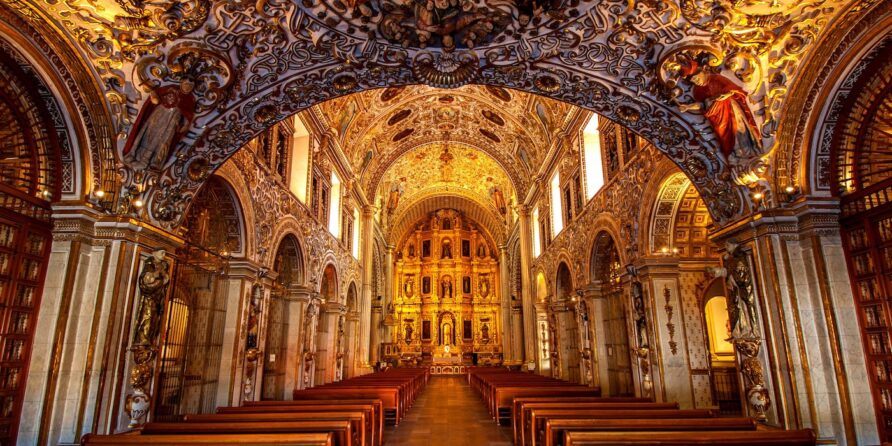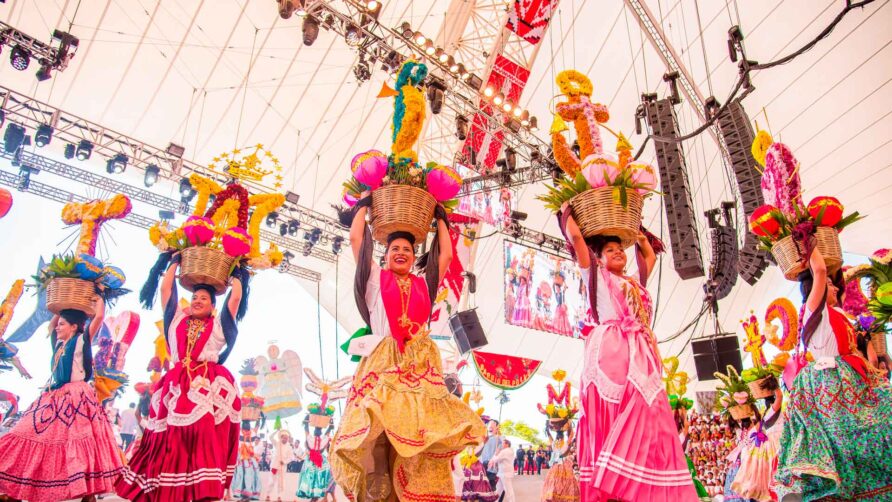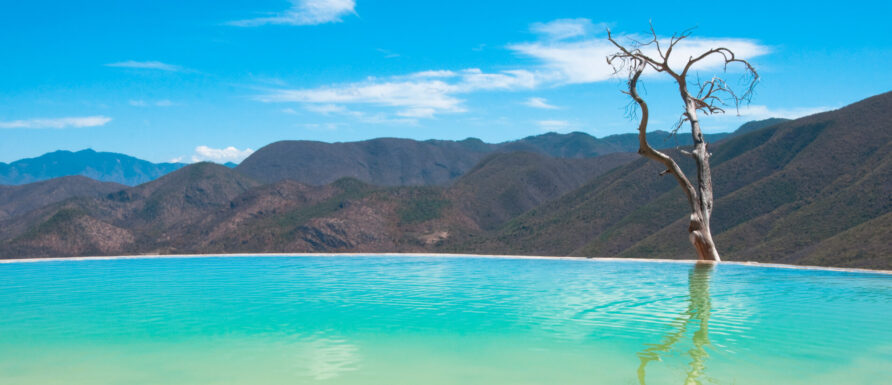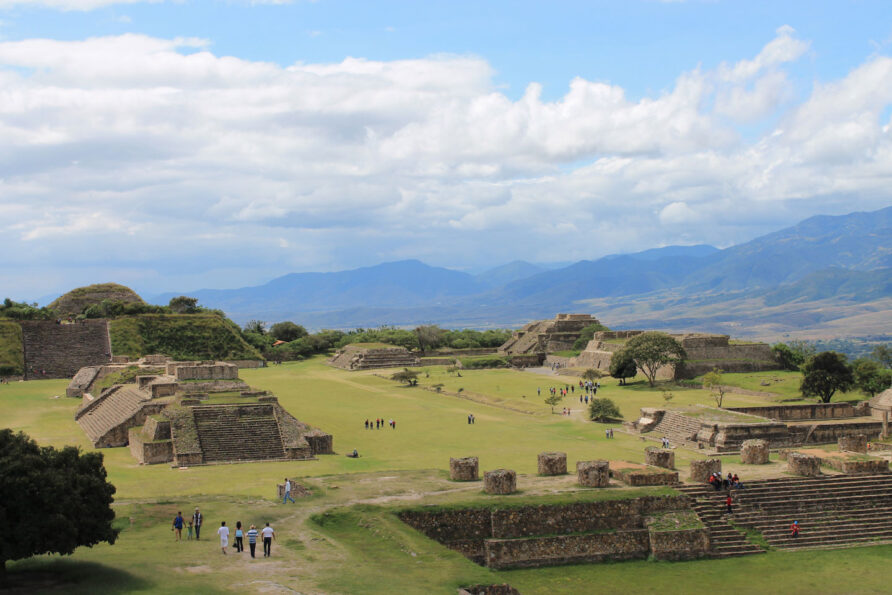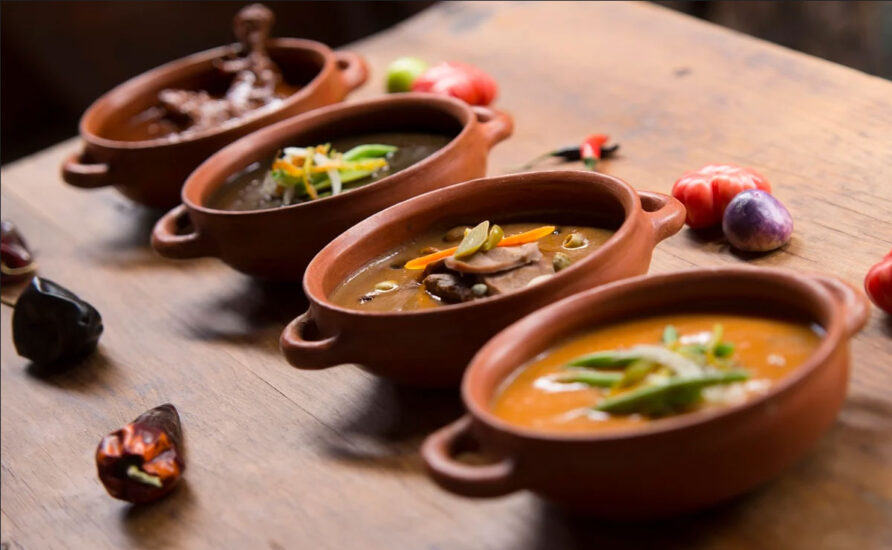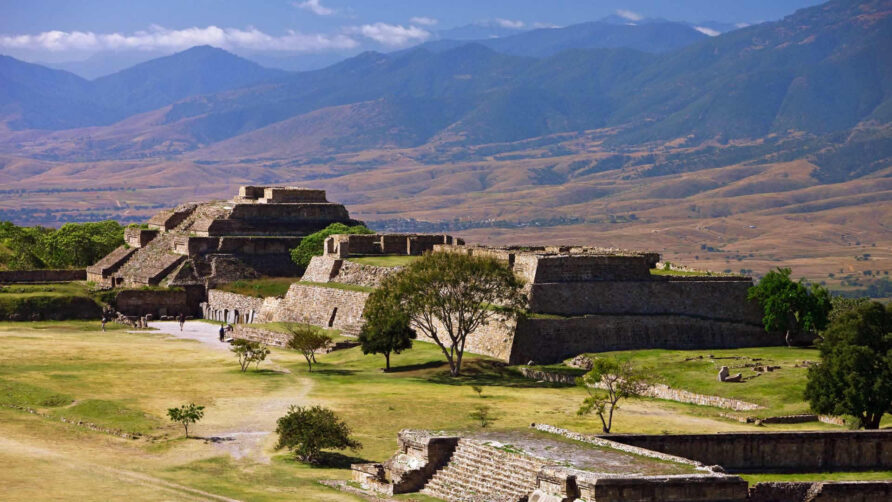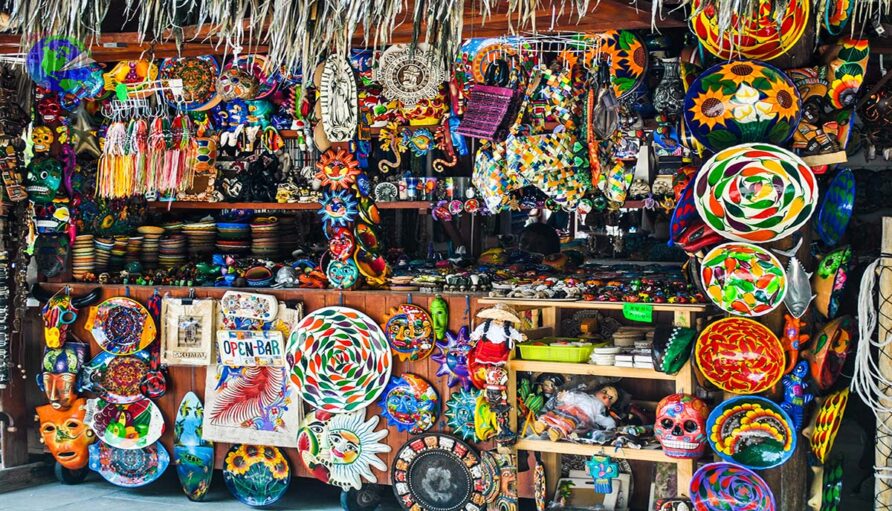Ro-House » Oaxaca " Magic towns
In Oaxaca we are proud to have 5 communities who have been awarded the title of Magical Towns of Mexico, a Magical Town is a town that has symbolic attributes, legends, history, transcendent events, everyday life, in short magic that emanates in each of its socio-cultural manifestations, and that today mean a great opportunity for tourist use.
The Magical Towns Program contributes to revalue a group of populations in the country that have always been in the collective imagination of the nation as a whole and that represent fresh and different alternatives for national and foreign visitors.

Map of the Magical Towns of Oaxaca

Capulálpam de Méndez
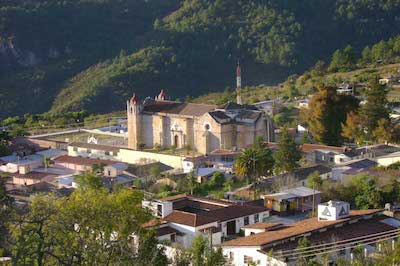
A place framed by Sierra Madre Oriental and abundant cloud forests. As you walk through its streets you will recognize the traditional architecture with materials such as adobe, wood, tile and yellow quarry. Its beginnings go back to an indigenous Zapotec community that still exists and is proud of its roots.
Do not miss the breakfasts in the Municipal Market, there you will taste delicacies such as tlayudas and the Tasajo enfrijoladas. Although, if you prefer attractions with even more natural beauty, visit the Center Capulálpam Mágico Community Ecological Tourism for lodging and its Restaurant Los Molinos Recreational Center, there awaits you a 100 meter long zip line that crosses over a river.
Capulálpam de Méndez, one of the most beautiful places in our Mexico, a place where history, nature, gastronomy, music, folklore, architecture, uses and customs (governance), traditional medicine, with the warmth of its people who welcome visitors and seduce them as they travel through each area of our territory, all in a context of millenary knowledge, which is combined and translated into constant growth and development of the community.
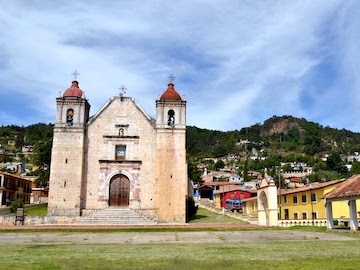
Since 2008 it is proudly part of the Magic Towns of Mexico program, a recognition of the organization, work, the architecture of the place, the conservation of its values, customs, traditions and the hospitality of our people.
To speak of Capulálpam is to enter the Oaxacan geography, where you only need to be here, with your senses open, to discover in its details the greatness of its past, in its streets, alleys, paths, roofs, houses and its church. Perceive its smells, flavors and hear in their stories the vital importance of their present and glimpse their future as a land of promise and hope.

Saint Peter and Saint Paul Teposcolula
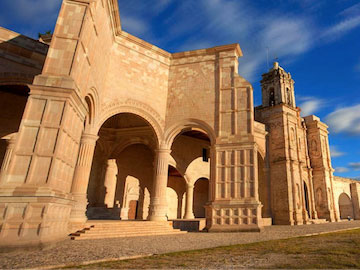
The colonial art and architecture of Teposcolula are a mix of indigenous and European concepts and techniques. The Mixtecos preserved their identity, their culture and their completely indigenous symbols, and they knew how to integrate them with the culture of the Spanish.
The word Teposcolula derives from the Nahuatl tepoztli "copper, colotl" twist "and tla" together "or" between ", which means" next to the copper twist ". Its name in mother tongue is Yucundaá “Cerro de Subida”.
When the evangelizers arrived in the region, they built one of the most important works of the 16th century in New Spain: the temple and cloister of San Pedro and San Pablo, which have the largest open chapel in Latin America. It is located at an altitude of 2,300 meters above sea level and has a cool climate, with an average temperature of 17º C.
At present the Magical Town San Pedro and San Pablo Teposcolula It is an ideal destination to admire buildings and enjoy its exquisite cuisine.
It has a conventual complex which was built in the 16th century. Its facade of the temple shows a tequitqui art. The Chapel of Santa Gertrudis It has elements similar to La Antigua, in Guatemala. The Open Chapel is the largest in Latin America.
The Municipal Park is surrounded by the Portal de Dolores and the Parish House, ideal for strolling through its gardens and seeing the Las Mascaritas monument.
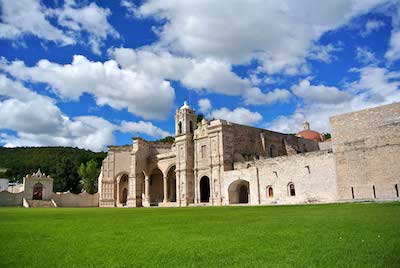
He Temple of San Pedro and San Pablo It houses oil paintings and a one-piece wood-carved confessional. Get to know the Chapel of Santa Gertrudis, in the former convent, with two Solomonic columns that support the groin vaults.
The House of the Cacica It is a 16th century building where several caciques lived, currently it houses the BS Children's Library.
In Yucundaa or Cerro de Pueblo Viejo there are vestiges of houses of Mixtec rulers and a ball game. Nearby is the Yucundaa Ecotourism Center in which you can camp.
At lunchtime, be sure to try the tamales with totomoste leaf in the Municipal Park, the stuffed chiles, the thick pozole with herbs santa and the yellow mole. For the drink you must try a cured brandy or a chilacayote water.
In the Municipal Market you can find palm items and hand embroidery, as well as crystallized fruits and vegetables.

Huautla de Jiménez
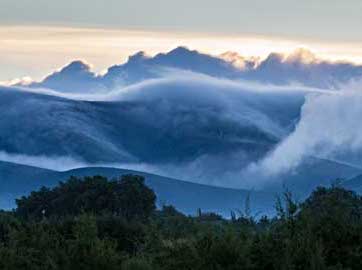
Huautla de Jiménez, town among the clouds and home of the Mazatecs, who invite you to participate in their ancient traditions. Live the experience of knowing their language, songs, dances and traditional medicine inherited from the famous Maria Sabina, Mushroom Priestess, also meet Mama Julia one of the 13 grandmothers in the world, heir to this ancestral knowledge.
Huautla de Jiménez is a municipality belonging to the district of Teotitlan in the Region of Cañada Mazateca of the state of Oaxaca, it is a rural-urban city, since it has a population of 68,555 inhabitants in the municipality and 53,999 in the City, and rural due to its scarce development in urban infrastructure, Huautla de Jiménez is the tenth largest population in the Oaxacan state.
The word Huautla comes from the Nahuatl word that, in the splendor of the Aztec manor, Cuitláhuac will name Cuiticaname - Huautlan, which etymologically means “Place of Eagles”. De Jiménez, in honor of General Mariano Jiménez, who visited the region in 1864. On December 14, 1926, by decree No. 55, Huautla de Jiménez obtained the title of City.
This indigenous culture has a set of symbols, characters, explanation of origin, sacred hills, rituals, calendar, clothing, music, caves, among others; Around which an identity is built that distinguishes them, a way of seeing, conceiving and interpreting the world, as recognized by the Declaration of the United Nations (UN) on the Rights of Indigenous Peoples.
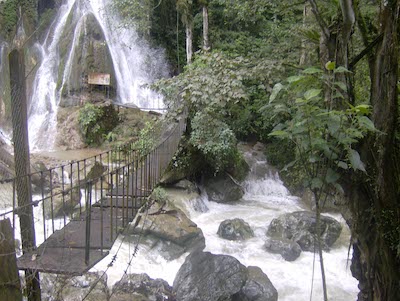
Its greatest charm are those Mazatec sounds and their regional costumes, coupled with that magical character of its inhabitants. It is the land of the famous María Sabina, the sage of hallucinogenic mushrooms, who learned to connect heaven and earth and use it for tanning purposes.
The gastronomy is another of the attractions of the place, you can enjoy the exquisite donkey bread and Canarian chilies, as well as sour atole, the quintessential Mazatec drink made with fermented corn, pipián and beans.
What to see in Huautla de Jiménez
It is a classic mountain town that has the Cathedral of San Juan Evangelista, whose bells were cast in 1866 and the clock tower, located in front of the Municipal Palace built in the 1920s and which currently serves as a cultural venue.
The Cerro de la Adoración, or the Abode of the Guardian of the Hills, is one of the most sacred places for all the inhabitants of this town. According to their traditions, at the top the strength is acquired to perform all their rituals, in fact the shamans consider the hill the guardian of the town and go to it every year to ask for the well-being of the entire community.
Things to do in Huautla de Jiménez
The surroundings also offer excellent options to its visitors, you can visit the Puente de Fierro Waterfall and the San Agustín Grottoes surrounded by beautiful wooded landscapes ideal for hiking, mountain biking or horseback riding.

Mazunte
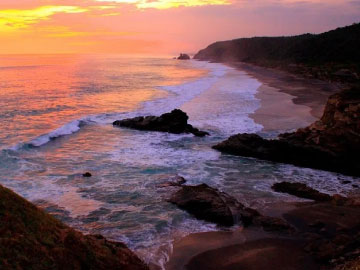
Mazunte It is a town located on the Pacific Ocean coast of the state of Oaxaca, located 264 km from the Oaxacan capital. Mazunte or Mazunte as it is known worldwide, owes its name to a red and blue crab that lives in the place, but also in Nahuatl dialect it means "let me see you spawn", and this refers to the fact that the beaches of this place are Nesting site of sea turtles and from there the history of the population emerges, since the sixties the virgin beaches of Mazunte are visited by hundreds of turtles of the Golfina species that spawned at night in certain lunar stages of this natural phenomenon it is known as morriña.
The area is currently experiencing a tourist boom, attracting the interest of visitors who are looking for different experiences. It is the only community in the region that has internal construction regulations, which promote buildings that alternate with the surrounding nature; so it is characterized by rusticity and direct contact with nature.
El Mazunte has an extensive list of natural attractions, the main one being Punta Cometa, also known as Cerro Sagrado; It is the most prominent mountain of Mexico in the South Pacific. Its strategic location allows that from this area you can see amazing sunrises and magnificent sunsets. It is an important place for the migrations of marine species and birds.
The migrations in the months of December to March of humpback whales that use Punta Cometa as a route and geomagnetic reference stand out, appreciating the passage of this species from Punta Cometa does not represent any risk to people or whales, in the same way they can appreciate the migration of flocks of pelicans frolicking in whimsical shapes in the sky.
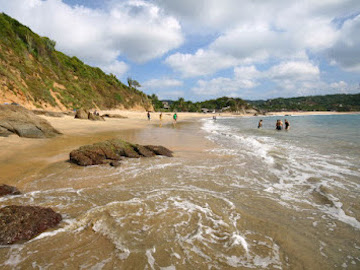
As the salient point is a shortcut in its route for all types of boats, it is possible to observe large boats plying only 500 meters away from the coast.
Without a doubt, you can swim and enjoy the sun on one of the most beautiful beaches in Oaxaca, so we recommend bringing a camera to document the good times of your trip.
In addition, it is one of the favorite places to camp in Mexico; Since the weather in Mazunte is ideal to enjoy one or two nights under the starry sky while you sleep to the rhythm of listening to the waves hitting.
Places to visit in Mazunte
Mazunte, Mexico has many must-see places that you must visit. You certainly have to discover why they are so popular and recommended for family visits.
- Mexican Turtle Center
- Laguna Ventanilla
- Punta Cometa
- Mermejita Beach
- Mazunte Beach

San Pablo Villa de Mitla

Talking about a place like MitlaIt is talking about history, mysticism, tradition and magic; of a place that lives in eternity, where time dissolves to exist in the midst of an atmosphere full of color, smell and flavor that allows us to live a past that is present. Thus, the greatest charm that Mitla offers to the world is not found in what can be seen, but rather in everything behind it, in its past, in its history, in that mystical process carried out through the years and that is materialized in each product born in this place.
Mitla has been from its origin, a symbol in itself, not a place, rather an entrance, a passageway that has a life of its own, that envelops with its charm anyone who closes their mortal eyes and opens their heart to begin to see from the soul, letting itself be carried away to that magical place that coexists in the same space of all that is perceptible that many appreciate but few live.
The wealth of Mitla is found in the environment, in the environment, in the breath of the legendary air that runs through this place since ancient times, witnessing the mysteries that are hidden in the past of the old Zapotecs who are currently the last guardians of this unique wisdom and that open that door to everyone.
Thus allowing crossing the boundary between the past and the present, between the ancient and the modern, between magic and reality, between this life and the next. And it is that Mitla is rich day and night, by any point that is admired, by any perspective taken in a photo, because each view, ritual, act and product has a reason to be, a reason to exist and to show itself that way.
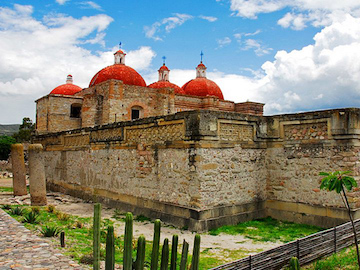
Xibalba (Quiché), Lyobaá (Zapotec), Mictlán (Nahuatl) or Mitla (Spanish), some of the names given to the "resting place" was a Great City-sanctuary, a religious and civil center of great preponderance and at the same time a sanctuary national. The history of Mitla, takes us back to the history of an ancient culture, even more than what could become the Zapotec culture, the lineage that currently inhabits this important center.
Since long before this great city became a fundamental part of such culture, Mitla was already an imposing settlement in which power resided, not only material, such as that possessed by kings and rulers, but one that extended beyond from the limits of life, a power over life and death.
Being the official residence of the Supreme Pontiff, the vicar of divinity, the oracle of faith and the channel through which all grace was communicated from heaven to earth, it also execrated, perpetually infamous with its curses, or granted them pardons and remissions; That is why among the inhabitants it was called Mitla, The Palace of the Living and the Dead. The place destined for the burial of the Zapotec pontiffs and monarchs, the passage to the next life, "The Great Door to Eternity."

More Tourist Attractions in Oaxaca
The beaches of the coast of the state of Oaxaca are among the most beautiful and complete in Mexico, thanks to a developing tourist infrastructure and the rich gastronomy of the Pacific. Along the 533 kilometers of coastline, the beaches of Oaxaca offer a wide variety of activities for lovers of water sports: snorkeling, diving, sport fishing, surfing, among others ... there is something for everyone!
Places such as Puerto Escondido, Mazunte, Zipolite, Carrizalillo, Puerto Ángel or the beaches of Huatulco will offer you the possibility of contemplating beautiful sunsets, delighting in intense adventure tourism or witnessing the exciting release of newborn turtles.
Oaxaca City, the state capital, is famous for its architecture and rich cultural traditions. Oaxaca also has a splendid and varied cuisine and a spring climate throughout the year. UNESCO declared the city a Cultural Heritage of Humanity. Oaxaca is the most diverse state in Mexico. It has peaks that reach more than 3,000 meters in height, caverns that are among the deepest in the world, pristine beaches, secluded forests and sunny valleys. Oaxaca is rich in traditions and customs and has the largest ethnic population in Mexico.
An ideal space for Alternative Tourism, Oaxaca offers activities such as walking, mountain biking, rappelling, climbing, zip-lining, horseback riding, observation of flora and fauna and more, in close contact with nature. The visitor can also witness the various aspects of local life, savor the gastronomy and enjoy the warmth of its people, as well as an offer of accommodation in hotels, ecotourism cabins, local houses or excellent camping areas. In its varied geography, it brings together not only a vast biodiversity, considered among the largest in the world, but also insurmountable cultural and ethnic riches, and the most different and beautiful natural settings.
In the state of Oaxaca there are many customs and traditions throughout the year, and within the state, said that they have the same purpose of celebration but with different things, in fact from one region to another or even more from one town to another, the Customs vary for perhaps details but that is what makes them authentic. Oaxaca has deep-rooted customs and traditions. All the holidays are celebrated, the profane and the religious ones. The festival calendar is extensive due to the diversity of ethnic groups, which they still conserve.
The Santo Domingo Cultural Center is a cultural complex that is located in what was one of the most important convents in the colony. It is a large convent in which the Museum of the Cultures of Oaxaca, the Fray Francisco de Burgoa Library and the Ethnobotanical Garden have been established. The Néstor Sánchez Public Newspaper Library is located in a building that is part of the complex but dates from the 19th century. Apart from all these institutions brought together, the Santo Domingo Cultural Center has multipurpose spaces in the former convent, in which temporary exhibitions, conferences, courses, book presentations and concerts are held, among many other activities.
Oaxaca's culinary tradition is extraordinary and deeply rooted. There are fourteen different ethnic groups, with their own dishes. It is an area of incomparable wealth for the tourist interested in gastronomy, ethnology and culture in general. Oaxaca is the land of mezcal, tlayudas and the famous seven moles. You have to dedicate several days to it. Oaxacan gastronomy is one of the cultural manifestations that identify and define its people, due to its variety, richness and complexity that have been preserved through the centuries. The best way to enjoy Oaxacan food is by tasting it, from the “strong” dishes that are used to enjoying at lunchtime; like the traditional Oaxacan snacks that can be enjoyed at any time of the day.
The Guelaguetza is an ancient tradition with pre-Hispanic roots related to agricultural ceremonies of gratitude to the gods for the arrival of the rains and the lifting of the harvest at the end of July and is the largest festival in Oaxaca. La Guelaguetza is a celebration of gratitude for the arrival of the rains and the harvests, in which representatives from all regions of the state gather in the capital to share their culture through dances, crafts and food.
The City of Oaxaca is a destination that offers a great variety of tourist attractions and charms that leave anyone surprised. However, there are other places that are also worth knowing and are in the surroundings of the city, in whose surroundings various populations are located, each with its own personality and artisan tradition, accompanied by their respective customs, festivals and dishes. .
Oaxaca is famous throughout the world for its archaeological sites and the history they keep. Discover Monte Alban, Mitla, Yagul and more of these remote sites, which have made Oaxaca a World Heritage city, according to Unesco. The original Zapotec and Mixtec peoples of Oaxaca lived in the cities and religious centers of the valley of this city until the time of Spanish colonization. Today, there are still vestiges of these towns and places where you can meet them.
The vast Oaxacan cuisine is distinguished by its tradition and the use of regional ingredients. Not for nothing has it positioned itself as the Best Tourist City in the World and the Best Gourmet Destination. In the presentation of the 2021 edition of The Mexico Gastronomic Guide "The Great Restaurants of Mexico" 278 restaurants located throughout the Mexican Republic were recognized, on this occasion, there were 16 Oaxacan restaurants that were placed in the list .
The name mezcal has its roots in one of the ancient native languages of the area and translates as 'agave (also known as maguey) cooked'. Although pre-Hispanic Oaxaqueños used maguey to make pulque (an undistilled alcoholic beverage), it seems that the real advances in mezcal production occurred when the Spanish arrived in Oaxaca; by bringing with them their knowledge of distillation processes.
Monte Albán is the most important archaeological zone of the Oaxacan entity, of unique regional importance due to the religious, political and economic control that the Zapotec state exercised over the population of the Valley of Oaxaca for more than thirteen centuries. It has been named by UNESCO as Cultural Heritage of Humanity along with the city of Oaxaca on December 11, 1987. The heritage of the Zapotec world reaches us through the magnificent archaeological sites designed in the Valley of Oaxaca. Of these, the city of Monte Albán stands out for its enormous importance as an economic, political and religious hub (it was the first urban complex in Mesoamerica); by its extension, almost as big as the current capital of Oaxaca; and for its long life, started around 500 BC and concluded around 850 AD
Crafts in Oaxaca are so varied and of such good quality that they have become a tourist attraction. The ancestral traditions, the diversity in the ethnic groups, as well as the richness in the history of the state have been manifested in the great diversity of creations of more than half a million artisans that are registered in Oaxaca. In the center of the state is the City of Oaxaca, a fascinating and hospitable capital in whose surroundings various towns are located, each with its own personality and craft tradition, accompanied by their respective customs, festivals and dishes.

Guided Tours in Oaxaca



